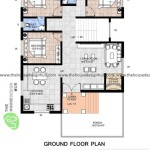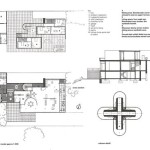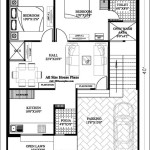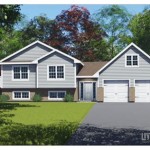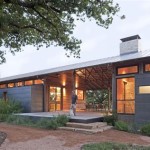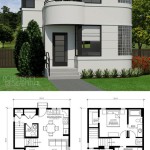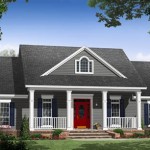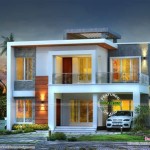Crooked House Plans: A Comprehensive Guide
The term "crooked house plans" evokes a sense of intrigue and perhaps even a touch of whimsy. These plans represent a fascinating architectural style that deviates from the traditional, rectilinear forms we often associate with buildings. Crooked houses, with their irregular shapes and seemingly haphazard arrangements, have captivated imaginations for centuries, leaving a lasting impact on the architectural landscape. This article delves into the world of crooked house plans, exploring their history, characteristics, and the reasons behind their enduring popularity.
The Origins of Crooked House Plans
Crooked house plans have a rich and diverse history, tracing their roots back to various cultures and architectural traditions. In medieval Europe, the vernacular architecture of timber-framed houses often incorporated irregular shapes and angles, influenced by the availability of materials and the desire to maximize space. Similarly, traditional Japanese architecture, particularly in the form of tatami rooms, embraced a flexible and adaptable spatial arrangement, leading to structures with irregular layouts.
The concept of “crooked” houses also draws inspiration from natural forms. The organic shapes found in nature, such as the branches of trees or the curves of rivers, have long been a source of inspiration for architects, influencing the design of buildings that are both aesthetically pleasing and harmonious with their surroundings. These influences are evident in the sinuous curves and unexpected angles found in many crooked house plans.
Characterizing Crooked House Plans
Crooked house plans are defined by a set of distinctive characteristics that set them apart from conventional architectural designs. These elements contribute to the unique aesthetic appeal and functionality of these structures:
1. Irregular shapes and angles
One of the most defining features of crooked house plans is the use of irregular shapes and angles. Walls may slant, roofs may curve, and windows and doors may be positioned at unexpected angles. This visual interplay between straight and curved lines, vertical and horizontal planes, creates a dynamic and captivating appearance.
2. Asymmetry and imbalance
Crooked house plans often embrace asymmetry and imbalance, challenging the principles of symmetry and order that are commonly found in more traditional architectural designs. This deliberate departure from symmetry creates visual interest and invites the viewer to explore the space in a more engaging way.
3. Use of natural materials
The use of natural materials is often integral to the design and construction of crooked houses. Stone, wood, and thatch are frequently employed, adding to the organic and rustic character of the structures. These materials not only contribute to the visual appeal but also complement the natural surroundings, blending the house seamlessly into the landscape.
The Appeal of Crooked House Plans
The enduring appeal of crooked house plans lies in several factors. These designs offer a refreshing departure from the predictable and often monotonous appearance of modern architecture. They inspire a sense of wonder and intrigue, inviting us to explore the unexpected and appreciate the beauty of irregularity.
Furthermore, crooked house plans often cater to a desire for individuality and self-expression. The unconventional shapes and layouts provide opportunities for homeowners to create spaces that reflect their unique personalities and lifestyles. The flexibility inherent in these plans allows for creative adaptations and customizations, ensuring that each crooked house is truly one-of-a-kind.
Beyond aesthetics, crooked house plans can also offer practical advantages. The irregular shapes and angles can create interesting and functional nooks and crannies, offering unique spaces for storage, study, or relaxation. The unconventional layouts can also optimize natural light and ventilation, contributing to a comfortable and energy-efficient living environment.

Crooked Playhouse Plans Kids Build A Play Houses

Crooked Little House

Wavy Residence Playhouse Plan 8x8ft Crooked Diy Project For Kids Paul S Playhouses

Kids Crooked Houses Play House Playhouse Plans

Crooked Kids Playhouse For A Fundraiser Diy Plans Low Cost Constructions Play Area Timber Roof Frame Osb Boards

Looking For Crooked Playhouse Plans The Perfect Man Cave Build A Play Houses Backyard

Kids Crooked Playhouses Landscaping Network

Crooked House For The Backyard How Cool Are These Playhouse Shed Plans Wendy

Kids Crooked Playhouses Landscaping Network

Easy To Build Crooked Playhouse Plans Outdoor Kids Diy Construction

